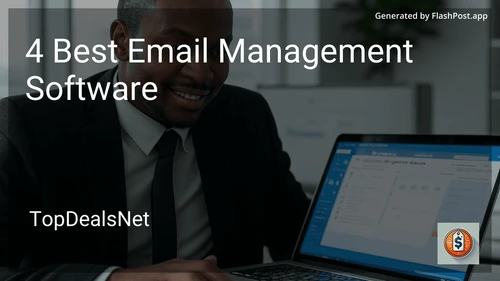Best Email Management Software in December 2025

Clean Email
- Bulk email management
- Unsubscribe from unwanted emails
- Automated email organization
- Data privacy and security

SaneBox
- AI-driven email sorting
- Snooze and reminders
- Attachments management
- Integrations with popular email clients

Mailstrom
- Organize emails in bulk
- Unsubscribe with one click
- Advanced filters and search
- Real-time email categorization

Unroll.Me
- Consolidate subscriptions into daily digest
- Easy one-click unsubscribe
- Intuitive dashboard
- Support for multiple email accounts
In today's fast-paced digital world, efficiently managing your email communications can significantly enhance productivity and organization. With an overwhelming number of emails flooding inboxes daily, choosing the right email management software can streamline your workflow and ensure nothing slips through the cracks. In this article, we'll explore the core elements of the best email management software and guide you on how to choose the one that suits your needs.
What is Email Management Software?
Email management software is designed to assist individuals and organizations in handling the complexities of managing large volumes of emails. These tools provide functionalities like organizing, archiving, and prioritizing emails to enhance efficiency and reduce clutter. By implementing robust email management solutions, users can improve response times, ensure important messages are not overlooked, and maintain a clean, organized inbox.
Key Features of Top Email Management Software
Understanding the features that are often integral to effective email management software can guide your decision-making process. Here’s what to look for:
1. Email Organization and Sorting
The ability to categorize and sort emails automatically is a fundamental feature. Look for software that can filter emails based on sender, subject, keywords, and other criteria to keep your inbox organized.
2. Prioritization and Task Management
Prioritization tools help identify and focus on high-priority emails. Some software solutions integrate task management features, allowing users to turn emails into actionable tasks with deadlines, helping you keep track of important follow-ups.
3. Automated Response and Templates
For businesses, having the ability to automate responses or utilize templates can save time and ensure consistency in communication. Choose software that allows customization of automated responses.
4. Integration with Other Tools
The best email management software should seamlessly integrate with other tools and platforms you use daily, such as calendars, CRM systems, and project management applications. This integration helps streamline workflows and improves coordination.
5. Security and Compliance
With the increasing importance of data security, ensure your chosen email management software adheres to security standards and compliance requirements. Features like encryption, spam filtering, and secure login processes are critical.
6. Analytics and Reporting
To enhance productivity, analytics and reporting features provide insights into your email usage patterns. Look for software that offers detailed reporting on email response times, volume, and other key metrics.
How to Choose the Right Email Management Software
When choosing the best email management software for your needs, consider the following factors:
1. Identify Your Needs
Before exploring options, assess your specific requirements. Do you need software to handle massive volumes, support multiple users, or integrate with other enterprise tools? Identifying your needs will narrow your options and ensure you choose the right tool.
2. Scalability
Consider whether the software can grow with your needs. If you're selecting a tool for business, it should have the flexibility to scale as your company grows, handling increased volumes and additional features.
3. Ease of Use
A user-friendly interface is crucial to ensure that all users, regardless of technical proficiency, can utilize the software effectively. Opt for solutions that offer intuitive navigation and easy setup.
4. Cost and Budget Considerations
Evaluate the cost of acquiring and maintaining the software. While some solutions may offer extensive features, ensure they fit within your budget. Consider trial periods or demos to gauge if the software is worth the investment.
5. Customer Support and Training
Efficient customer support and training materials can drastically improve your experience with the software. Choose a provider known for excellent support and resources that help you utilize the tool to its fullest potential.
Conclusion
Selecting the best email management software is a strategic decision that can significantly enhance both personal and organizational productivity. By focusing on the features that matter most to your workflow and thoroughly evaluating your options, you can find a tool that helps you manage your emails efficiently, leaving you more time to focus on what truly matters.
Take the time to explore, trial, and assess your options to ensure you choose the right solution to meet your email management needs today and in the future.
